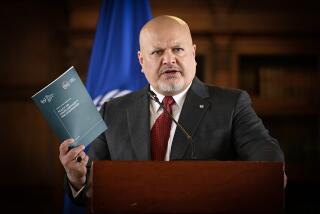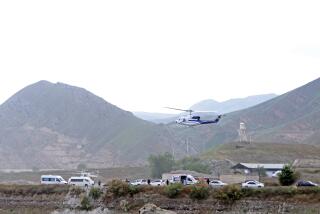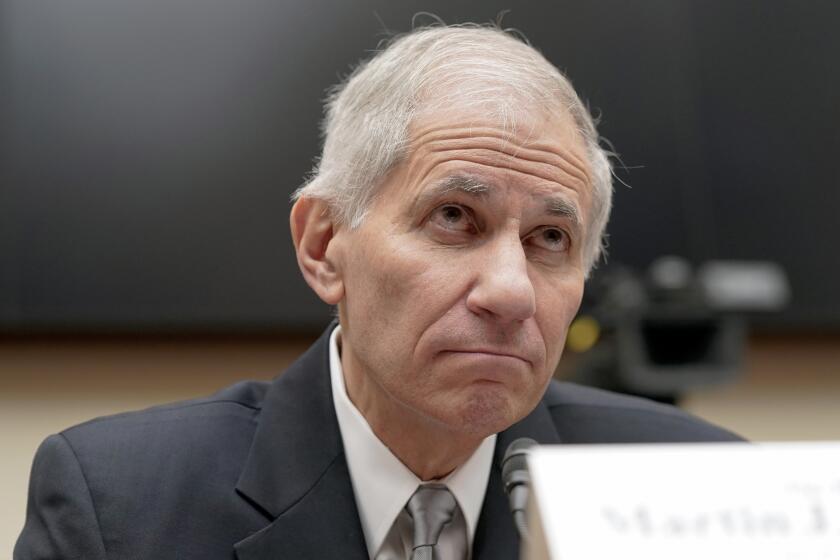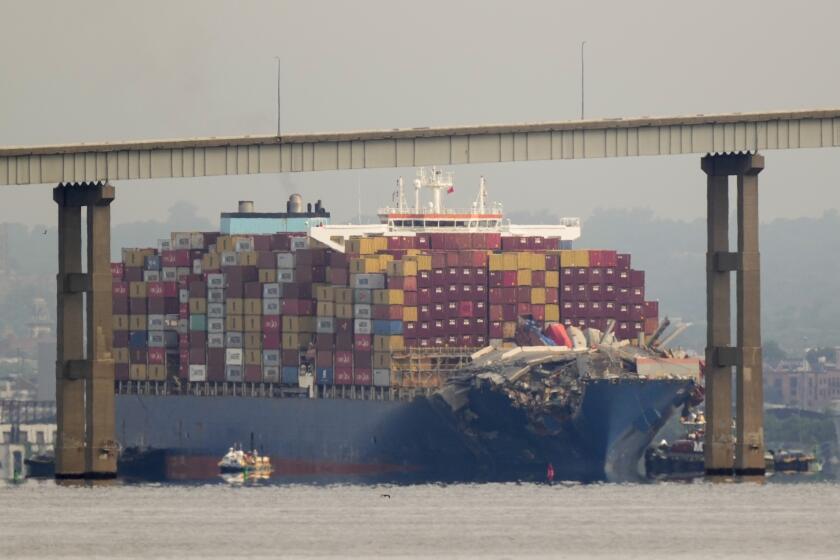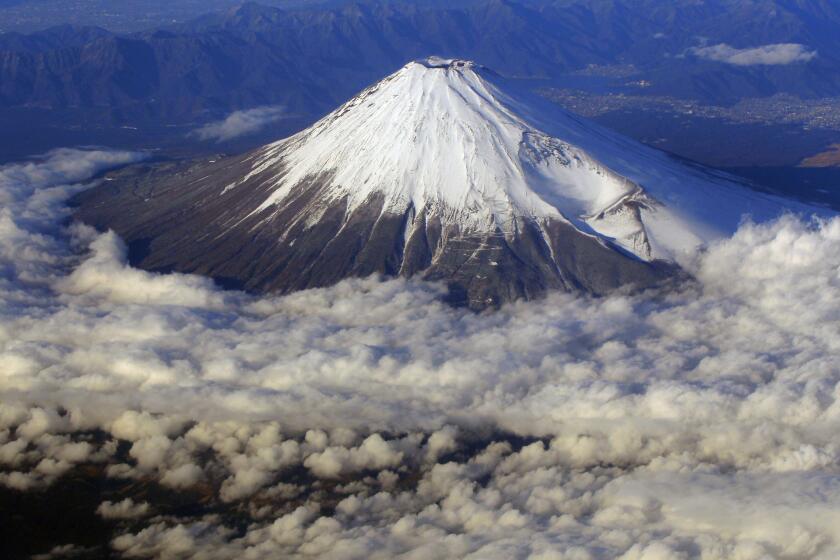Nuclear Bomb Makers Turn Focus to Countering Proliferation, Legacy : Weapons: American wizards of a generation’s nightmare now work to keep their handiwork from becoming all too commonplace.
As bomb maker James Mercer-Smith sees it, his contribution to world peace was designing weapons so terrifying no one would dare use them. “I view myself as the witch in all of Grimm’s fairy tales. My job is to scare little children,” he says.
He and his colleagues succeeded admirably. Deterrence worked. But the price was leftover arsenals of thousands of nuclear weapons and a lineup of nations like North Korea, Iraq and Iran bent on developing their own.
So now the scientists and engineers who built the bombs are shifting their focus to the task of the ‘90s and beyond: counter proliferation. American wizards of a generation’s nightmare now work to keep their handiwork from becoming all too commonplace.
Perhaps the most dramatic example of the drive to halt the spread of nuclear weapons is the cooperation between U.S. and Russian scientists who spent a generation competing to develop weapons of greater force and efficiency.
As one Russian scientist told Ron Auguston of Los Alamos: “Our two labs caused this problem.”
Right now, old habits of secrecy limit the cooperation between the former nuclear rivals. And there are frightening signs that Russia is losing control of some of its vast store of plutonium.
“Everybody has a sense proliferation has not slowed down in the absence of superpower confrontation,” said Roger Hagengruber, head of defense programs at Sandia National Laboratories in Albuquerque. “In fact, it may have speeded up.”
“There are lot of things people would like to uninvent if they could,” said weapons designer Rod Schultz. “The only problem is, some think you can do it.”
Coping with the legacy of the nuclear age is a challenge every bit as daunting as the one that faced the handful of scientists who moved to this remote New Mexican community in 1943 and developed the bombs that destroyed Hiroshima and Nagasaki and forever changed the way the world thought about war.
Each of the two bombs dropped on Japan in August, 1945, had the explosive force of 20,000 tons of TNT. Compare that to World War II’s conventional bombs, few of which contained more than 500 pounds of explosive.
Harold Agnew, who later ran the Los Alamos laboratories for many years, tells the story of giving tours of Tinian Island to VIPs eager to see the place from which the planes took off carrying the atomic bombs dropped on Japan.
There wasn’t much to see--models of “Fat Man” and “Little Boy” and the machinery used to load them. Little else.
One display was the wooden box that carried the plutonium pit--a grapefruit-size metal-clad ball that is key to creating a nuclear explosion.
“Just a minute, sonny,” interrupted a visiting admiral. “Are you trying to tell me that you carried in that box right there something that was the equivalent of 20 thousand tons of TNT?”
“Yes, sir, that’s right,” said Agnew.
“Young man, you may believe that, but I don’t have to.” With that the admiral and his entourage marched out.
That story illustrates one of the horrors of the nuclear age. Plutonium pits are as transportable as bowling balls. They don’t glow; they’re not hot; they don’t give off instantly lethal doses of radiation.
But in the right hands or the wrong, they are the heart of nuclear weapons.
Fifteen pounds of plutonium in the hands of a terrorist with the know-how would be enough to produce a crude bomb, the equivalent of one or two thousand tons of TNT. Enough to topple the twin towers of the World Trade Center if set off in its parking garage.
The Manhattan Project produced only two bombs--and both were used. After the explosion that destroyed Nagasaki, the U.S. atomic arsenal was empty. If Japan had refused to surrender and a third bomb was needed, scientists at Los Alamos would have had to scramble to build it.
The third bomb was never needed. Untold numbers of bombs were tested by the United States, the Soviet Union, Britain, France and China. But none was used in all the world’s wars since 1945.
The arsenals grew by multiples of thousands, and not until the end of the Cold War were serious steps taken to reduce them.
Almost daily specially designed trucks deliver nuclear weapons to a sprawling industrial complex on the outskirts of Amarillo in the Texas Panhandle.
The Department of Energy’s Pantex plant is where nuclear weapons are put together and taken apart. The work is done in domed areas called Gravel Gerties, the name stemming from their unique feature: a roof covered with 17 feet of sand and gravel.
Plant officials say there is no danger, absolutely none, of a nuclear explosion during the process. But there is the possibility of a conventional explosion. Should that occur, the sand and gravel would collapse into the area to prevent the radioactive materials from escaping.
In this age of dismantlement, the Department of Energy hopes to take apart up to 2,000 nuclear weapons a year at Pantex.
Still, it is not explosions that worry people who live around Pantex. It’s the pits. When a weapon is taken apart, the plutonium pit is removed and placed in temporary storage at Pantex.
Temporary started out meaning about seven years. Now the talk is closer to 50.
But whatever worries Pantex neighbors have about its plutonium storage are minor compared to those that scientists at Los Alamos and Sandia have about plutonium in Russia and elsewhere in the world.
If security is tight enough, if no one sells one, pits are easy to keep track of. Plutonium dust and shavings are another issue.
Hagengruber said that even in a well-managed program the plutonium that is unaccounted for is in the range of a few percent--”the material in the pipelines, the material in the ventilators, material in the filters.”
That’s a well-managed program.
In the case of the former Soviet Union, he said there is “a handful of tons of material” unaccounted for.
In August, German police arrested three men when they arrived at Frankfurt from Russia with a little over a pound of weapons-grade plutonium in their luggage.
The other key element to building a bomb is knowledge and experience. There’s plenty of both in the former Soviet Union.
“It’s hard for us to imagine what’s happening in the breakup of the Soviet Union,” said Paul Robinson, who has worked at both Los Alamos and Sandia and from 1988 to 1990 was chief U.S. negotiator at nuclear test ban talks.
Suddenly Russian weapons scientists stopped getting regular paychecks and some took side jobs as truck drivers.
“Once you start driving trucks you get mobile and I’m worried,” he said. “I am worried that maybe the contacts (from countries seeking their talent) are easier.”
To help stem that potential movement of talent, U.S. scientists are “trying hard to find ways to develop lab to lab contact,” said Hagengruber, to help their Russian counterparts “find meaning for their lives and their profession in a world that is undergoing change.”
How tight are international efforts to prevent countries from obtaining the materials and expertise they need to develop nuclear weapons? The labs train the International Atomic Energy Agency inspectors who go to Iraq and other countries in search of evidence that a weapons development program is under way.
They also play what Mercer-Smith calls the “Catch a Thief Game.”
The goal is simple, he explained: “How would an experienced weapons designer look at export controls as an amusing challenge and try to go around them?”
More to Read
Start your day right
Sign up for Essential California for news, features and recommendations from the L.A. Times and beyond in your inbox six days a week.
You may occasionally receive promotional content from the Los Angeles Times.
